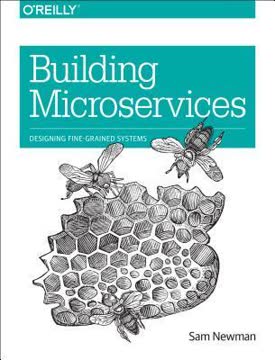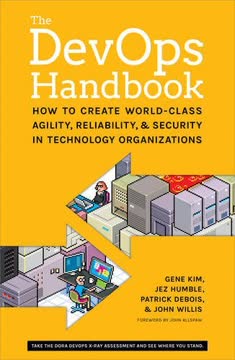Key Takeaways
1. People are the most critical factor in software development success
The major problems of our work are not so much technological as sociological in nature.
Human factors matter most. Despite the emphasis on technology in software development, the biggest challenges and opportunities lie in managing people effectively. Technical skills are important, but factors like team dynamics, communication, and work environment have a more significant impact on project outcomes.
High-Tech Illusion: Many managers fall prey to the "High-Tech Illusion," focusing primarily on technical solutions while neglecting human factors. This leads to suboptimal results, as even the best technology cannot compensate for poor team dynamics or an unsuitable work environment.
Invest in people: To achieve success in software projects, managers should:
- Prioritize creating a positive work culture
- Foster effective communication among team members
- Provide opportunities for professional growth and learning
- Address interpersonal conflicts promptly
- Recognize and reward both individual and team achievements
2. Create a productive work environment to maximize performance
You can't manage thinking workers effectively if their workspace is too enclosed or too exposed. A good workspace strikes the balance.
Optimize the workspace. The physical environment significantly impacts productivity and job satisfaction. A well-designed workspace can enhance focus, creativity, and collaboration, while a poor one can lead to frustration and decreased performance.
Key elements of a productive workspace:
- Adequate personal space (at least 50 sq ft per person)
- Noise control and privacy
- Natural light and views
- Flexibility to accommodate different work styles
- Communal areas for collaboration and socializing
Beyond physical space: Creating a productive environment also involves:
- Minimizing interruptions and distractions
- Providing the right tools and resources
- Encouraging a balance between individual work and collaboration
- Fostering a culture of trust and autonomy
3. Hire and retain the right people for long-term success
Hiring a juggler to perform in a circus, you wouldn't think of hiring without first seeing him juggle.
Hire for demonstrated skills. Traditional hiring processes often fail to assess candidates' actual abilities effectively. Instead of relying solely on resumes and interviews, incorporate practical evaluations that demonstrate relevant skills and cultural fit.
Effective hiring strategies:
- Use work sample tests or auditions
- Involve team members in the hiring process
- Look for diverse skills and perspectives
- Assess cultural fit and ability to work collaboratively
Retention is crucial: Keeping talented employees is as important as hiring them. To improve retention:
- Provide competitive compensation and benefits
- Offer opportunities for growth and learning
- Foster a positive work environment
- Recognize and reward good performance
- Encourage work-life balance
4. Foster team jelling to enhance productivity and satisfaction
The purpose of a team is not goal attainment but goal alignment.
Facilitate team bonding. When teams "jell," they become more than the sum of their parts, achieving higher productivity and job satisfaction. Jelled teams have a strong sense of identity, shared goals, and effective communication.
Characteristics of jelled teams:
- Low turnover rates
- Strong sense of identity and camaraderie
- High productivity and quality of work
- Enjoyment in working together
Promoting team jelling:
- Allow teams to form naturally around projects
- Provide opportunities for social interaction
- Encourage open communication and trust
- Protect teams from unnecessary interference
- Celebrate team successes and milestones
5. Embrace change and continuous learning for organizational growth
You can never improve if you can't change at all.
Foster adaptability. In the fast-paced world of software development, organizations must be able to adapt and learn continuously. This requires creating a culture that embraces change and values continuous improvement.
Keys to organizational learning:
- Encourage experimentation and calculated risk-taking
- Provide opportunities for training and skill development
- Foster knowledge sharing within and across teams
- Learn from both successes and failures
- Stay open to new ideas and approaches
Managing change: Recognize that change can be difficult and often meets resistance. To implement change effectively:
- Communicate the reasons and benefits of change clearly
- Involve employees in the change process
- Provide support and resources during transitions
- Celebrate small wins and milestones
- Be patient and persistent, as meaningful change takes time
6. Manage meetings and communication effectively to avoid waste
The ultimate management sin is wasting people's time.
Optimize communication. Ineffective meetings and excessive email can significantly hamper productivity. Managers must strive to create a communication culture that respects people's time and enhances collaboration.
Improving meeting effectiveness:
- Have a clear purpose and agenda for each meeting
- Invite only essential participants
- Start and end on time
- Encourage active participation and decision-making
- Follow up with clear action items and responsibilities
Streamlining communication:
- Use appropriate communication channels for different types of information
- Encourage face-to-face or video conversations for complex discussions
- Implement "quiet time" or "no-meeting days" to allow for focused work
- Train employees on effective email and communication practices
- Lead by example in respecting others' time and attention
7. Make work enjoyable to boost creativity and retention
People under time pressure don't work better—they just work faster.
Prioritize job satisfaction. Enjoyable work environments foster creativity, innovation, and employee retention. When people find their work fulfilling and fun, they are more likely to be engaged, productive, and loyal to the organization.
Creating an enjoyable work environment:
- Encourage autonomy and ownership of projects
- Provide challenging and meaningful work
- Foster a culture of trust and respect
- Celebrate successes and learn from failures
- Allow for flexibility in work hours and location when possible
Balance fun and productivity: While it's important to create an enjoyable workplace, maintain a focus on results. Find ways to incorporate fun and creativity into the work itself, rather than treating them as separate activities. This approach can lead to innovative solutions and higher-quality outcomes while keeping employees engaged and satisfied.
Last updated:
FAQ
What's Peopleware: Productive Projects and Teams about?
- Human Factors Focus: The book emphasizes that the primary challenges in project management are sociological rather than technological, highlighting the importance of understanding team dynamics and human behavior.
- Team Dynamics and Environment: It explores how team chemistry, interpersonal relationships, and the physical workspace impact productivity and project outcomes.
- Management Insights: The authors provide insights into effective management practices that foster team cohesion and productivity, encouraging a focus on building community and trust within teams.
Why should I read Peopleware: Productive Projects and Teams?
- Insightful Management Strategies: The book offers practical advice for managers on improving team productivity and morale, challenging conventional practices that prioritize technology over people.
- Timeless Relevance: Despite being published in the 1980s, the principles remain relevant in today’s work environments, making it a valuable read for modern managers.
- Real-World Examples: The authors share numerous case studies and anecdotes, making the content relatable and actionable for readers.
What are the key takeaways of Peopleware: Productive Projects and Teams?
- Sociological Over Technological: The authors assert that the major problems in work are more sociological than technological, encouraging a focus on team dynamics and communication.
- Jelled Teams: The concept of a "jelled team" is central, describing a group that works together seamlessly and effectively, often outperforming individual efforts.
- Avoiding Teamicide: The book outlines practices that can kill team spirit and productivity, advising managers to avoid these pitfalls to maintain a healthy work environment.
What are the best quotes from Peopleware: Productive Projects and Teams and what do they mean?
- "The Great Oz has spoken.": Reflects the often unquestioned authority of management decisions, suggesting leaders should be open to feedback and collaboration.
- "You never get anything done around here between 9 and 5.": Highlights inefficiencies in typical office environments, where interruptions hinder productivity.
- "The whole is greater than the sum of the parts.": Emphasizes the power of teamwork, indicating that collaborative efforts can yield results that exceed individual contributions.
What is the concept of a "jelled team" in Peopleware: Productive Projects and Teams?
- Definition: A jelled team is one where members are closely knit, functioning as a cohesive unit, leading to enhanced productivity and job satisfaction.
- Characteristics: These teams exhibit low turnover, a strong sense of identity, and a shared commitment to their goals, with members taking pride in their collective achievements.
- Impact on Success: Once a team begins to jell, their chances of success increase dramatically, becoming highly motivated and capable of overcoming significant challenges together.
How does Peopleware: Productive Projects and Teams address the issue of management by objectives (MBO)?
- Critique of MBO: The authors criticize MBO for potentially undermining team cohesion and motivation, fostering competition rather than collaboration.
- Alternative Approaches: Advocates for creating a shared vision and goals that all team members can rally around, encouraging cooperation and a sense of collective purpose.
- Long-term Success: By focusing on team alignment rather than individual performance metrics, organizations can achieve better long-term results, building a more engaged workforce.
What is the High-Tech Illusion mentioned in Peopleware: Productive Projects and Teams?
- Misplaced Focus on Technology: Refers to the belief that technology is the primary driver of success, often leading to neglecting the human aspects of work.
- Reality of Human Interaction: Emphasizes that successes stem from good human interactions, underscoring the importance of communication and collaboration over mere technological advancements.
- Need for Balance: Encourages managers to balance attention between technology and the people who use it, recognizing that effective teamwork is essential for leveraging technology successfully.
How does Peopleware: Productive Projects and Teams define effective team management?
- Understanding Team Dynamics: Involves recognizing the unique contributions of each member and fostering a collaborative environment, where the whole is greater than the sum of the parts.
- Encouraging Open Communication: Promotes transparency and open dialogue among team members to build trust and improve collaboration, addressing issues before they escalate.
- Creating a Supportive Environment: Advocates for a work environment that allows for creativity and innovation, where the best workers know enough to keep silent and roll their eyes.
How does Peopleware: Productive Projects and Teams suggest hiring practices should change?
- Focus on Skills and Fit: Recommends prioritizing candidates' skills and their fit within the team, emphasizing the importance of seeing candidates' work samples.
- Use of Auditions: Suggests implementing auditions for candidates to provide insight into their abilities and communication, assessing potential hires in a practical context.
- Avoiding Aptitude Tests: Critiques reliance on aptitude tests, arguing they often measure the wrong skills, suggesting a focus on real-world performance and team dynamics.
What role does the physical workspace play in productivity according to Peopleware: Productive Projects and Teams?
- Impact of Noise and Interruptions: Argues that a noisy and disruptive environment can severely limit productivity, highlighting the need for quiet spaces.
- Importance of Privacy: Suggests that a workspace allowing for privacy and concentration is essential for effective work, with spaces catering to comfort.
- Designing for Collaboration: Advocates for physical layouts that facilitate teamwork while providing areas for individual work, ensuring spaces are functional.
How does Peopleware: Productive Projects and Teams address the issue of employee turnover?
- Understanding Turnover Costs: Explains that high turnover rates can be costly, both financially and in terms of team cohesion, creating a cycle of instability.
- Creating a Sense of Community: Suggests fostering a sense of belonging and community among employees to reduce turnover, with organizations striving to be the best.
- Investing in Employee Development: Argues that providing opportunities for growth and development enhances employee satisfaction and loyalty, essential for long-term success.
What strategies does Peopleware: Productive Projects and Teams recommend for improving team productivity?
- Fostering Open Communication: Encourages open dialogue among team members to address issues and improve collaboration, with communication being key to effective teamwork.
- Creating a Conducive Environment: Advocates for designing workspaces that minimize distractions and promote focus, allowing for both individual work and team collaboration.
- Investing in Team Dynamics: Prioritizes team-building activities and fostering relationships among team members, emphasizing the importance of team chemistry for productivity.
Review Summary
Peopleware is widely praised as an essential read for managers and software professionals. Readers appreciate its focus on the human aspects of project management rather than technical issues. Key themes include creating productive work environments, building effective teams, and avoiding common management pitfalls. Many reviewers note the book's enduring relevance despite its age. While some find certain sections outdated, most agree the core principles remain valuable. Critics cite occasional repetitiveness and anecdotal evidence, but overall the book is highly recommended for its insights into team dynamics and management practices.
Similar Books










Download PDF
Download EPUB
.epub digital book format is ideal for reading ebooks on phones, tablets, and e-readers.





